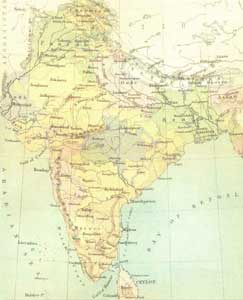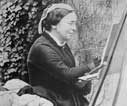| UCLA Library Special Collections |
 |
|
India presented
challenges (Emily Eden describes travel by mule, elephant
and litter, and an encounter with man-eating tigers), but
travel to Oceania and the Far East, “distant, wild and
malarial,” was strictly for professionals. Only the
seasoned world travelers came here – Isabella Bird,
Ida Pfeiffer, Anna Brassey and Marianne North. Poverty, disease
and extreme weather were the norm, and the threat of violence
was “always in the air.”
Ida Pfeiffer, happening on a Dayak tribal war, during her
trek through the jungles of Borneo, wrote:
“Had I been a man, they would have taken me for a spy,
and either sent me back, or what is more likely, put me to
death.”
|

 |
|
|
 |
|
 |
Emily Eden
(1797-1869)
Eden and her sister Fanny accompanied
their brother Lord Auckland to Calcutta in 1835, on his
appointment as governor-general. Up the Country
describes their six-month journey from Calcutta up the Ganges
by steamer to Benares, and onwards to Kashmir – on
foot, and by carriage, sedan chair, palanquin, horse and
elephant.
A classic of the literature of the
Raj, this book has been reprinted many times. Eden was also
an accomplished artist; Portraits of the People and
Princes of India was published on her return to England
in 1844. |
| 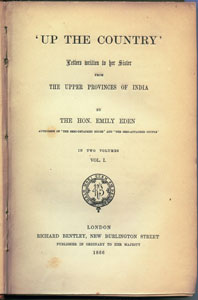
Emily
Eden. Up the Country: Letters Written to her Sister
from the Upper Provinces of India. (London: R. Bentley,
1866).
|
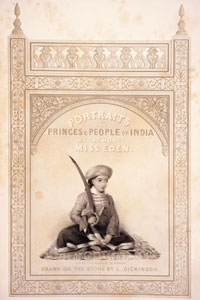
Title-page
from Emily Eden’s Portraits of the People and
Princes of India (London: 1844). |
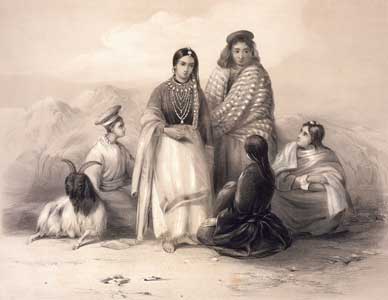
from
Portraits of the People and Princes of India. |
 |

Lady
Anna Brassey (1839-1887)
Lady Anna Brassey.
The Last Voyage to India and Australia, in the “Sunbeam.”
London: Longmans, Green & Co.1889.
Lady Brassey was the
wife of a British M. P. and diplomat, the mother of five
children, and a great collector of natural specimens. The
family spent most of their life at sea in their 540-ton,
three-masted yacht, the Sunbeam. Brassey wrote
five very popular travel books about their travels to the
Arctic, the Caribbean, South America and Polynesia. In 1887,
returning from a trip to India and Australia (pictured here),
she died of malaria at age forty-eight, and was buried at
sea.
|
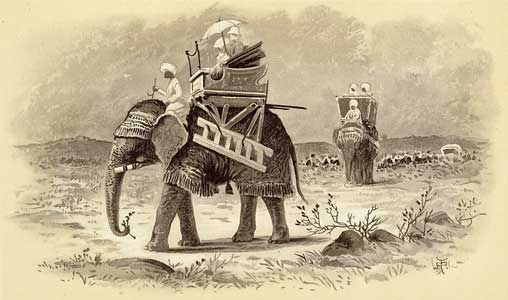 |
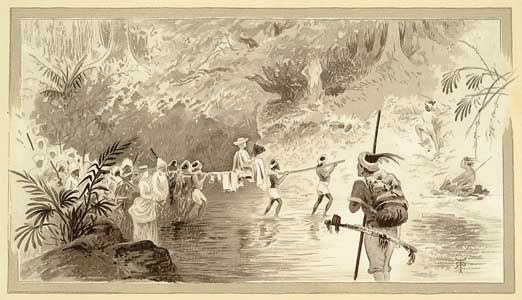 |

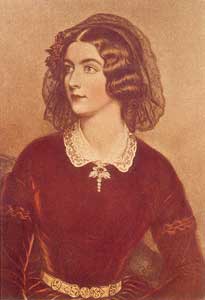 |
Lola
Montez (1818-1861) “Lola
Montez, the Spanish Dancer” (in reality, Irish-born
Maria Dolores Gilbert) was a traveler–adventurer who
toured Europe, Australia and California as an actress/exotic
dancer and high-end mistress. One of her lovers, King Ludwig
of Bavaria, actually made her a Countess. In the 1850s,
she took her act to San Francisco and Australia, eventually
returning to America as a “lecturer” on such
topics as “female beauty” and “love.”
|
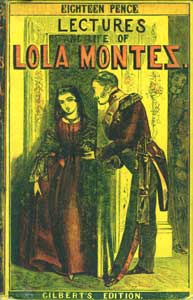
Lola Montez. Lectures of Lola
Montez (Countess of Landsfeld), including her Autobiography.
London: Ward and Lock, 1858.
|
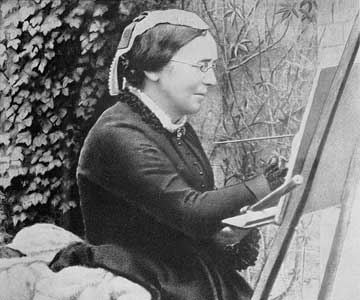 |
Marianne
North (1830-1890)
Like Kingsley and Bird, North was a bright, adventurous spinster
who began travelling at age forty. Charles Darwin and Joseph
Hooker encouraged her in her passion for botany. From 1871
to 1886, she traveled across five continents (Borneo and Ceylon
were favorite places) painting tropical flowers, plants, butterflies
and birds in their natural habitats. Her 832 paintings can
still be seen at the North Gallery, in Kew Gardens, London.
|
Vol.
1 of North’s three-volume autobiography. The cover
decoration for this volume shows Nepenthes northiana,
a species of pitcher plants discovered by Marianne North,
and named for her.
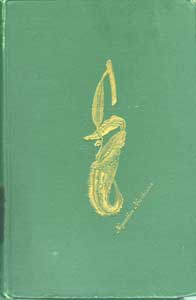
Marianne North.
Recollections of a Happy Life. London and New York:
Macmillan and Co., 1892. |
| CATALOGING
THE NATURAL WORLD
In the eighteenth and
nineteenth centuries, there was a mania for “botanizing”
and collecting, in response to the urgings of Linnaeus to
catalog the natural world. Many women travelers were excellent
naturalists. Mary Kingsley collected plants, rocks, fish
and reptiles, discovering new species and bringing back
specimens in pickling jars for the British Museum. Margaret
Fountaine, a serious entymologist, amassed a collection
of 22,000 butterflies, now in the Castle Museum, Norwich.
Marianne North collected wood and plant specimens and had
five new species of plants named after her.
|
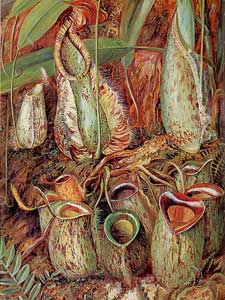 |
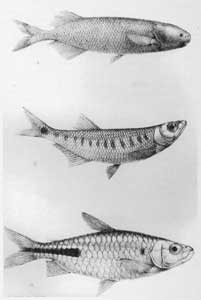 |

wilder
shores exhibit home |
europe
| russia
| turkey
| the
middle east | india
and the far east | africa
| the
americas | credits
©
2007 by the Regents of the University of California. All rights
reserved. |
|
Wilder
Shores is organized geographically, loosely following the structure
of Barbara Hodgson’s book No Place for a Lady: Tales of Adventurous
Women Travelers. (Berkeley: Ten Speed Press, 2002). The exhibit features
books and manuscripts, both by and about, women who traveled to these
regions:
|

